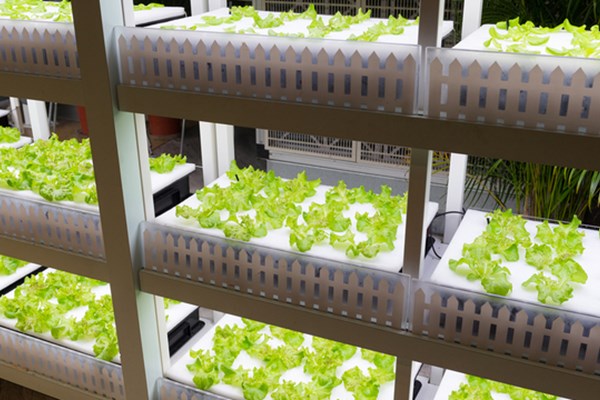Preferential electricity rates can help boost local agriculture
Feb 25, 2022

Any opportunity to meaningfully lower energy costs for the local agriculture sector should be viewed as an investment toward a more resilient and self-sufficient Hawaii.
Back in 2019, the State Legislature passed HB452 “to promote the increased production of fruits and vegetables for local consumption,” acknowledging that, without a preferential rate for electricity, protected agriculture could not economically produce the quantities of fruits and vegetables needed to advance Hawaii’s sustainability initiatives. Signed into law as Act 203 that year and codified as HRS § 269-27.7, the Hawaii Public Utilities Commission (PUC) now has the authority to “establish preferential electricity rates for agriculture activities that utilize protected agriculture to produce fruits or vegetables for distribution.”
In an encouraging move, Hawaiian Electric in May 2021 proposed preferential electricity rates for local food producers who meet the definition of “protected agriculture.” The preferential electricity rates are now before the PUC for approval. The proposed preferential electricity rates are offered as “energy credits” or discounts to offset the electricity costs of local food producers, if they qualify. The energy credits vary for each island.
The following shows Hawaiian Electric’s proposed energy credits for protected agriculture, a term described in Act 203 as encompassing “a variety of crop production technologies and techniques that use partial or full control of a plant's micro-climate to target the particular requirements of the species, helps overcome local pests and weather pressures that negatively impact agriculture in the State”:
|
Island |
Hawaiian Electric’s Proposed Energy Credit cents per kilowatt hour (“kWh) |
|
Oahu |
-1.8 |
|
Hawaii Island |
-1.2 |
|
Maui |
-1.6 |
|
Molokai |
-4.9 |
|
Lanai |
-4.7 |
As a participant in this regulatory proceeding, Ulupono Initiative leveraged its established relationships with Hawaii’s food producers in Honolulu, Maui and Hawaii counties to better evaluate the proposed energy credits and offer a representative view of the needs and preferences of potentially eligible customers. Earlier this month, Ulupono provided the PUC with several recommendations to increase the attractiveness of Hawaiian Electric’s new “Protected Agriculture” program (Rider PA Tariff), informed by discussions with local food producers and data specific to Hawaii’s agriculture sector.
A primary recommendation is to increase the proposed energy credits for eligible customers. After conducting an independent financial analysis of Hawaiian Electric’s proposed energy credits based on electricity data from local food producers, Ulupono does not believe the Rider PA Tariff, as proposed, will offer meaningful savings for Hawaii’s farmers. Based off sector-specific estimates, the average protected agriculture producer on Oahu would only save $270, or about 6% on annual electricity costs. For Hawaii Island, these savings would be even smaller, saving a producer $180 on annual electricity costs, and roughly $15 dollars on monthly electricity costs.
“Our refrigeration units consume the bulk of our power (over 70%) generated from our 65 panel system, which is also servicing two of our greenhouses,” said a Mililani farm operator, adding that a higher percentage reduction would better incentivize investment; otherwise, the currently proposed energy credit rate may not be worth doing the required reporting and paperwork to the utility.
The same operator also questioned whether the definition of “non-protected” ag activities was too restrictive, especially as it relates to hydroponic and aquaponic operations. “If pumping water and air (for our fish) is not considered as an important part of hydroponic and aquaponic protected agriculture … this would only leave our fans and computers, which burn a very small percentage of the electricity used in our greenhouses,” he explained.
Another farm operator, located in Kunia, also suggested that the definition of protected agriculture may need to be modified so it does not exclude relevant operational costs. “We use a series of fans or cool bots on small ACs to control growing temperatures,” he said, further explaining that post-harvest care of Hawaii produce, such as refrigeration and freezing, is often his largest electrical expense.
Ulupono offered several other, higher energy credits for consideration to more appropriately support Hawaii’s local agriculture sector, while also protecting customers from increased electricity rate impacts caused by the Rider PA Tariff. We are hopeful the recommendations will be considered. The alternative energy credits recommended by Ulupono, along with other program related recommendations, can be found in Ulupono’s Statement of Position filed in Docket 2021-0078 on Feb. 11, 2022.
“A more resilient, affordable and secure future for Hawaii is dependent on solving the unique challenges of an island state in the 21st century,” Ulupono president Murray Clay stated in the formal Statement of Position. “These challenges — climate change, resource scarcity, high electricity costs, pandemics — are intensified by the state’s reliance on costly imports, particularly for food and fuel … Reduced electricity rates can help Hawaii farmers achieve scale, more competitive pricing, and product consistency, in turn, improving how Hawaii addresses food security challenges and achieve local food production goals.”

